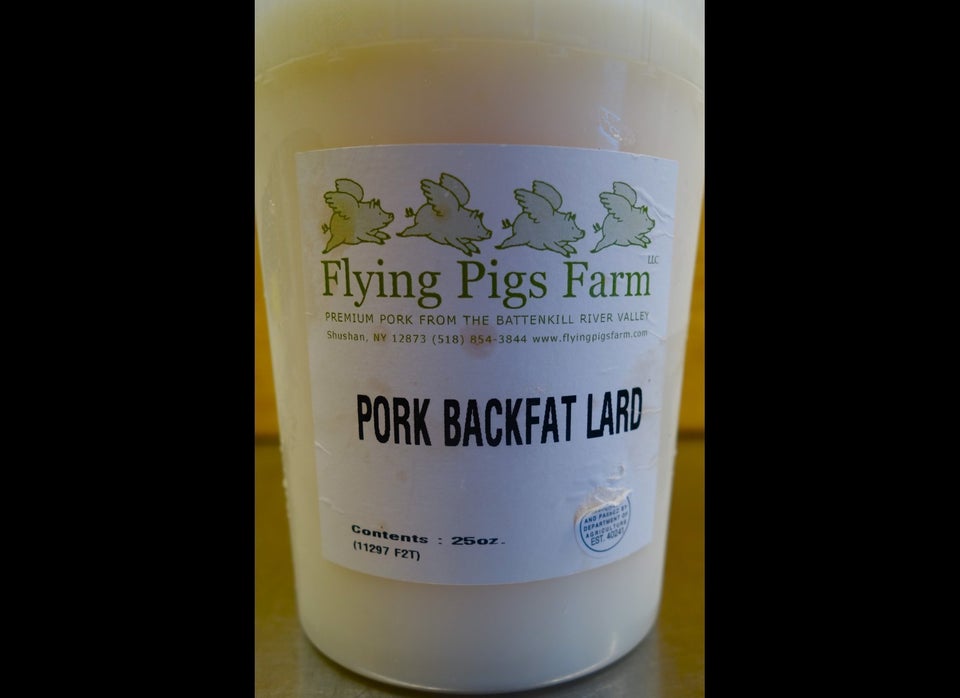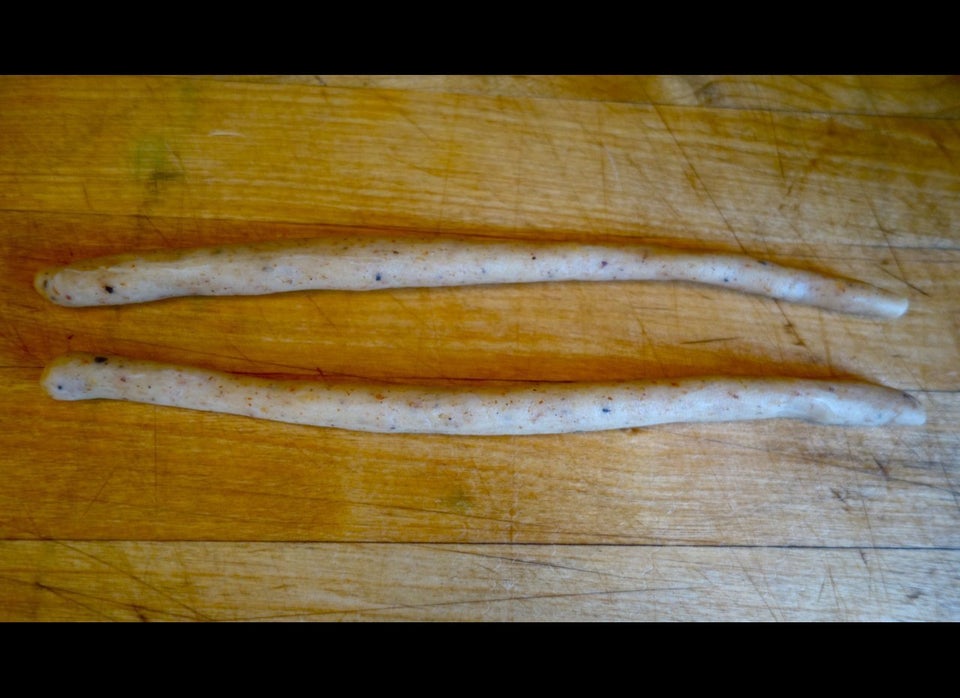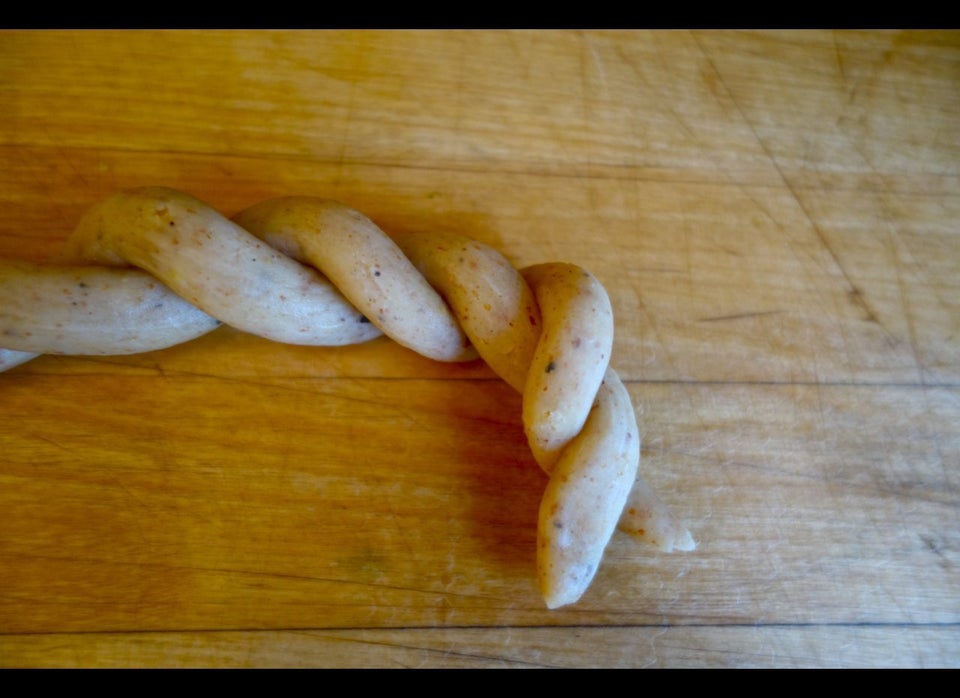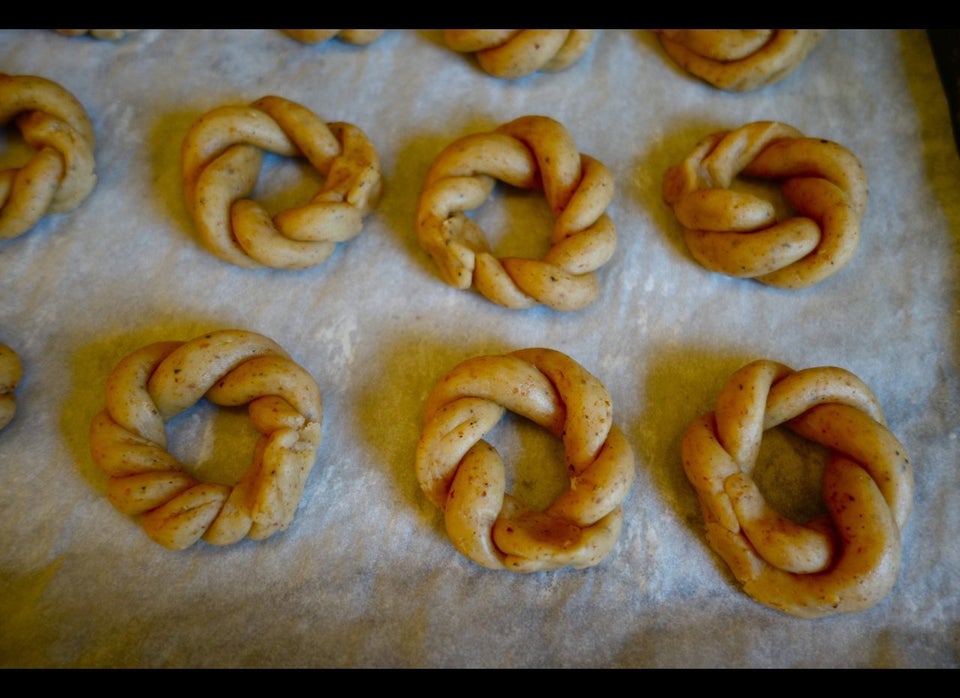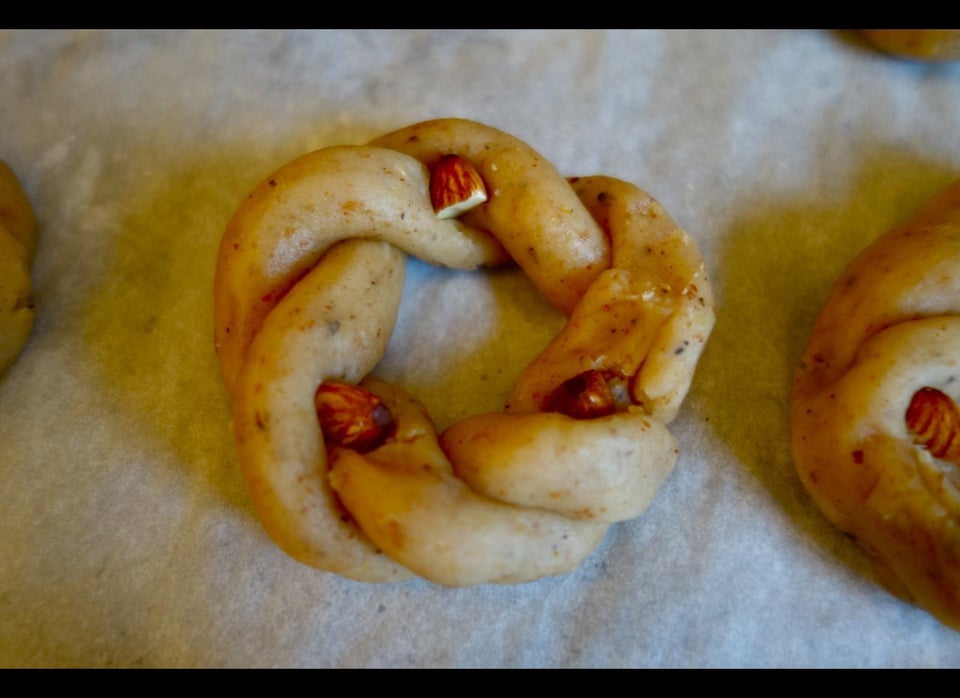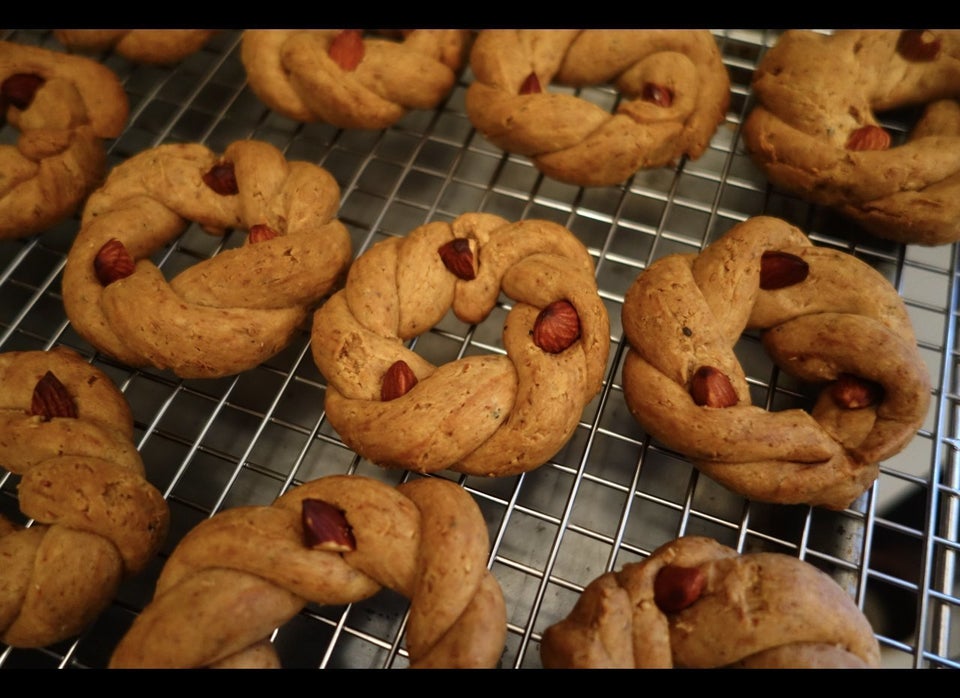On our first two trips to Naples, Jackie and I had paid no mind to the taralli that were undoubtedly as omnipresent then as they are now. The taralli we knew in New York were bland, dry things like teething rings, whether bought by the pound from an Italian-American bakery or in a cellophane bag from a grocery store. Why would they be any different in Naples?
Well, we started our most recent visit with a couple of cocktails on the seventh-floor terrace of the Hotel Excelsior, and with our negronis came a bowl of what we assumed were those boring old teething rings. But since this was in lieu of dinner (we'd arrived late in the evening), we dug in and were startled to find a completely different sort of snack: crumbly-crisp, scented with porky lard, studded with almonds and aggressively spiced with black pepper. We asked the waiter how the hotel came by such special, unprecedented taralli, and, invisibly rolling his eyes, he explained that these were Neapolitan taralli and entirely typical of the breed. Yeah, sure, we thought.
We bought some from a very ordinary bakery on our long, hot walk up (and up and up) to the Capodimonte Museum, and the waiter proved to be right: These were very much along the same lines, though the ones at the Excelsior were more flavorful.
So, Neapolitan taralli were high on the list of things I wanted to make at home, and they turned out to be less of a challenge than I'd have imagined, though it helps to be fairly comfortable with pastry- and dough-making. Many older recipes lack almonds, so you can join me in ignoring them; while more modern recipes vary a lot, they have enough in common that it was not too difficult to conflate them into a version that worked well for me and that tasted an awful lot like the real thing.
The dough is a hybrid: it's like a shortcrust, yielding a crisp and friable tarallo - not at all hard. But (though it rises only minimally) it contains yeast and is kneaded and handled more than a pie dough would be comfortable with; that's where the structure comes from - while crisp, these taralli do not fall apart when you look at them the wrong way. Just about every recipe I consulted in regional Italian cookbooks and online wanted me to begin by making a sponge by stirring fresh or active dry yeast into some of the flour and water. For years, I've been a convert to instant yeast, one of whose virtues is that you can add it to a dough (one that contains liquid, anyway) along with all the other ingredients, so my recipe has been streamlined, with no discernable damage to the outcome. I'm giving the measurements as I used them - mostly in grams, but some in spoon measurements - with approximate conversions, which will work all right so long as you pay attention to the consistency of the dough and adjust quantities as necessary. But buy yourself a scale if you don't already use one.
For a dozen aperitif-sized taralli (they are sometimes twice this size), I added 75 grams (around 1/2 cup) oven-toasted (but cooled) skin-on almonds to the food processor and chopped them to a coarse meal - not to a powder. Note that you will need another couple of dozen almonds for later. I added 250 g flour (say, 2 cups), 1/2 teaspoon sugar, 2 teaspoons freshly ground black pepper (a lot!), a scant 2 teaspoons fine salt and a good teaspoon of instant yeast. I ran the food processor until the mixture was homogeneous and tasted it for salt and pepper; it should be quite peppery. I then added 100 g (1/2 cup more or less) good lard, cold from the fridge; when I say good lard I mean not the tasteless fat you see in the supermarket. Nice lard comes from old-fashioned butchers or farmers' market pork farmers who render their own; it needs to smell delicious. I pulsed the food processor as when making pie dough until the lard and dry ingredients formed a sandy mixture. I gradually added 90 ml (about 3 fluid ounces - a little more than 1/3 cup) cool water until a workable dough formed.
I gave the dough a brief knead on the work surface and left it in a tightly covered bowl or container for a couple of hours. The yeast will do its job, but because of its density the dough will not rise very much. Don't worry: you're not making bread.
Now I divided the dough into twenty-four 20-gram pieces (a tightly packed level tablespoon each) and had ready a parchment-paper-lined baking sheet; the paper is optional, but it is my habit to use it. On the work surface, I kneaded each piece of dough for a moment to make it more workable, then formed two of them into pencil-thin ropes about 18 cm (7 inches) long. After laying the two ropes parallel to each other, I pinched them together at one end, twisted them into a double helix, formed each twisted pair into a circle, pinched it closed and laid it onto the baking sheet.
When they were all ready, I cut a couple of dozen almonds in half and firmly inserted three halves into each tarallo. I covered them with a cloth and let them rest (and slightly rise) for an hour or two, then baked them for 35 or 40 minutes (less in a convection oven) until golden brown or a little browner: they started at 400 degrees F (200 C), but I turned the thermostat to about 375 (190) as soon as they went in.
Once they'd cooled on a rack, it was all we could do to keep our hands off them until our guests arrived. How did I describe the ones we ate in Naples? "Crumbly-crisp, scented with porky lard, studded with almonds and aggressively spiced with black pepper." That's just how these home-made taralli were - a more than reasonable facsimile and a great way to pretend you're sitting on a terrace gazing at Mount Vesuvius.
